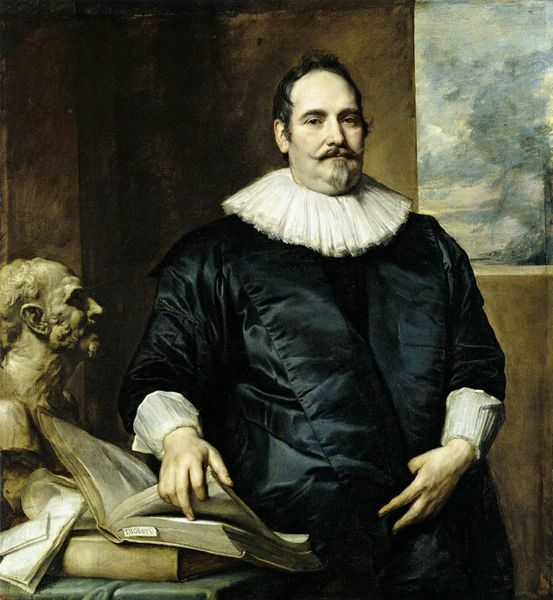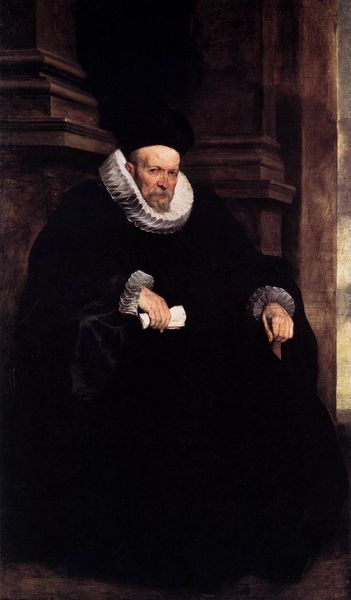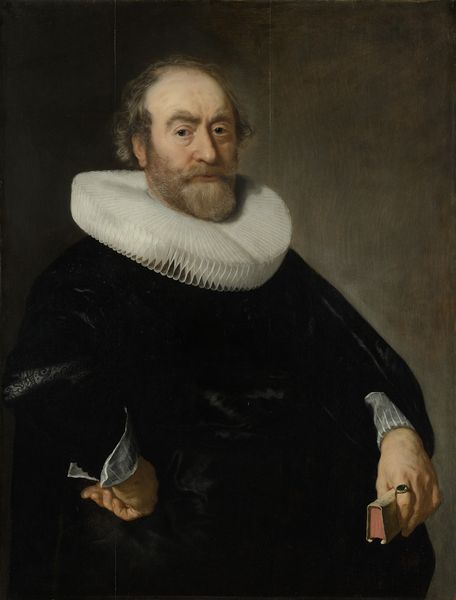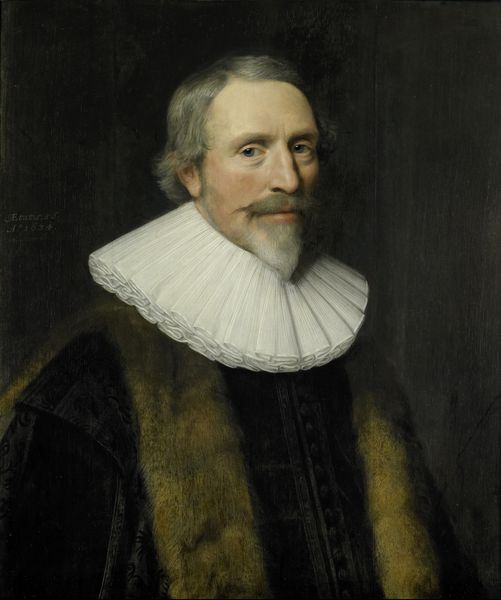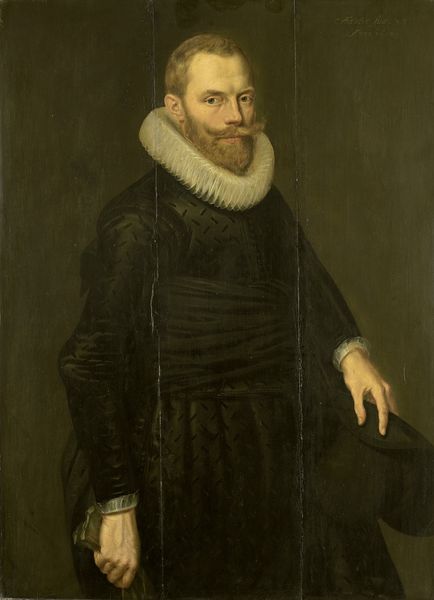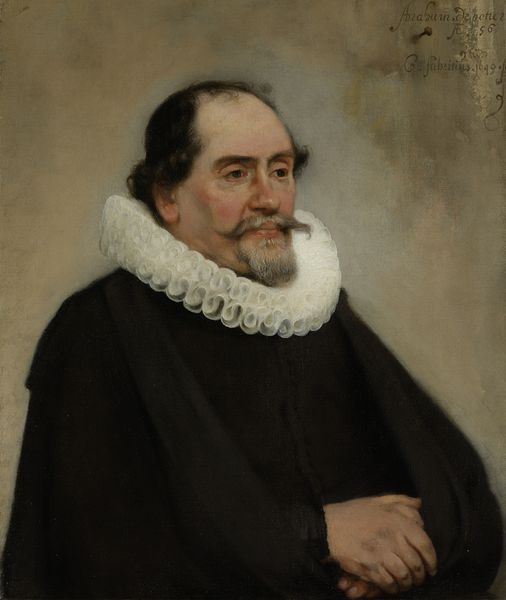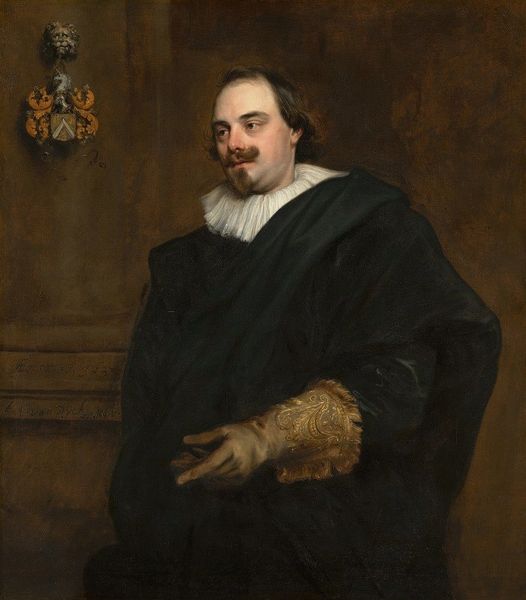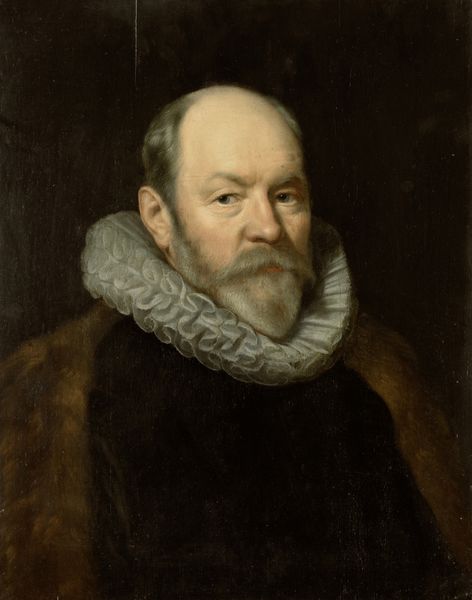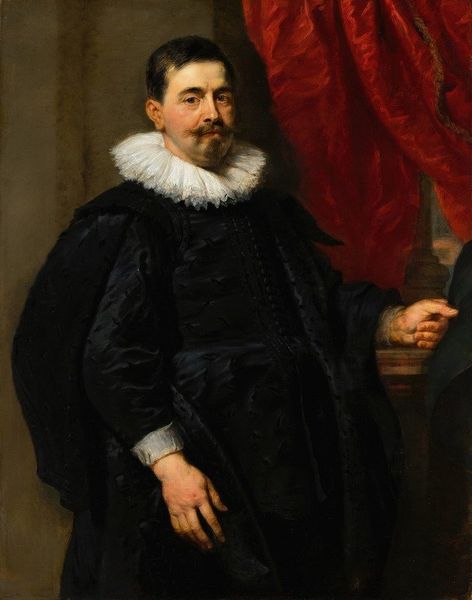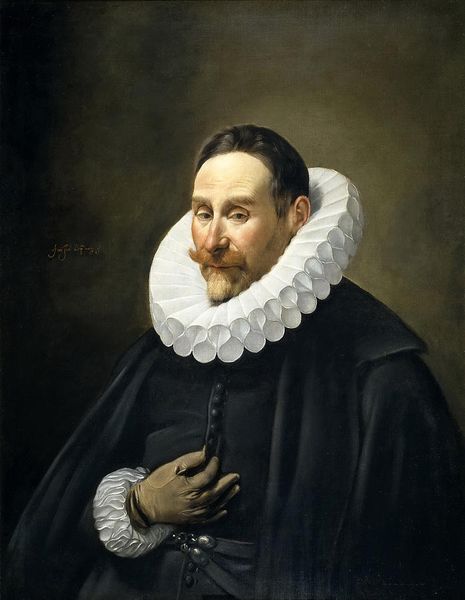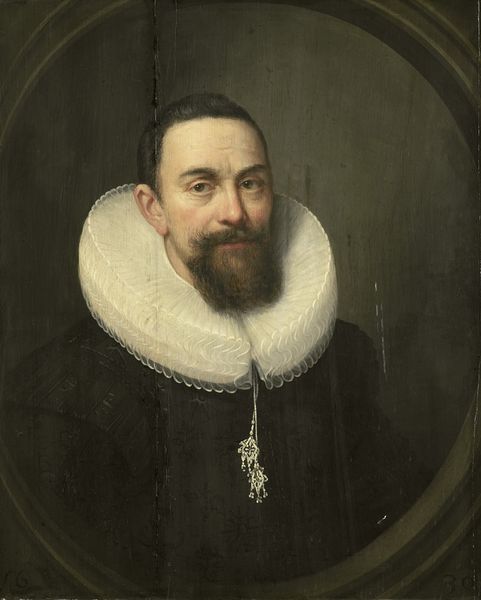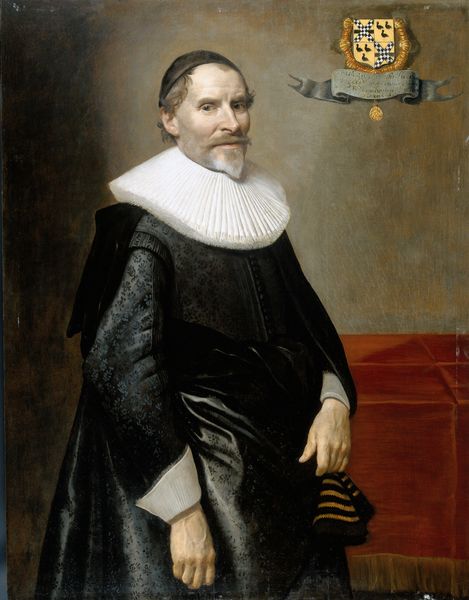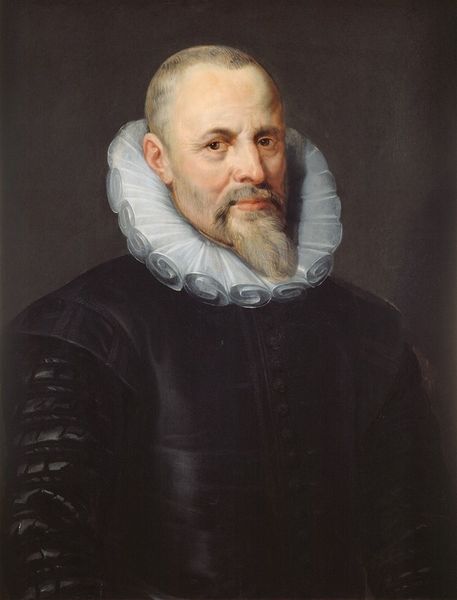
painting, oil-paint
#
portrait
#
baroque
#
painting
#
oil-paint
#
figuration
#
history-painting
#
academic-art
Dimensions: 118 x 101 cm
Copyright: Public domain
Curator: We’re looking at Anthony van Dyck’s "Portrait of Jacques Le Roy," painted in 1631. It's an oil painting, currently residing at the Thyssen-Bornemisza Museum in Madrid. Editor: My first impression is a sense of contained opulence. The dark furs and velvet create a weighty presence, contrasting with the delicate lace collar framing Le Roy's face. There is also something aloof and intimidating about his gaze. Curator: The portrait provides a window into the social structures of the era. Van Dyck was a sought-after portraitist among the elite, and depicting Jacques Le Roy, emphasizes his status as a figure of some importance during that time. This portrait serves as a testament to their interconnected networks of power and patronage. Editor: Absolutely. And the way Van Dyck renders Le Roy’s clothing – the fur, the velvet – speaks volumes. It highlights the power dynamics inherent in portraiture, emphasizing Le Roy’s wealth. However, it also says something about masculinity and the construction of gender through the means of art and material culture. Curator: We should also note the careful detail in rendering his features, from the subtle wrinkles around his eyes to the precise construction of his ruffled collar. Van Dyck was not simply painting a likeness; he was crafting an image. These details construct a public persona. Editor: I wonder about that public persona. While undeniably powerful-looking, he doesn't strike me as particularly... sympathetic. Perhaps it's the cool color palette or the set of his mouth, but I don’t sense much vulnerability, or if so it's carefully hidden. Is that the point? Curator: Precisely. These commissioned portraits were carefully calculated statements of intent, designed to project power and secure social standing within Antwerp's political landscape. It's not just art, but propaganda in a way. Editor: A compelling intersection of personal representation and public declaration. Thank you for untangling those power dynamics, very thought provoking. Curator: Thank you, it has been a fascinating discussion!
Comments
No comments
Be the first to comment and join the conversation on the ultimate creative platform.
